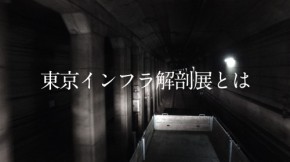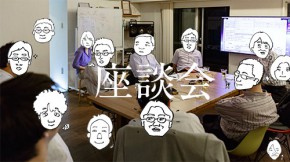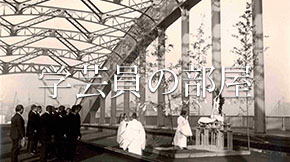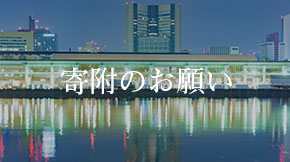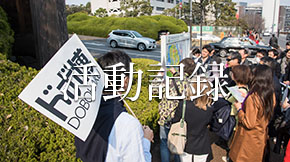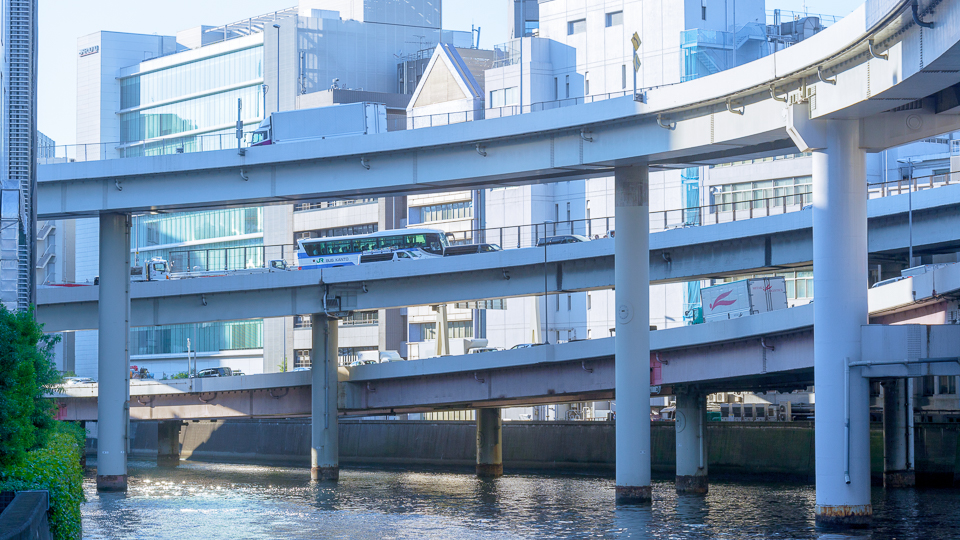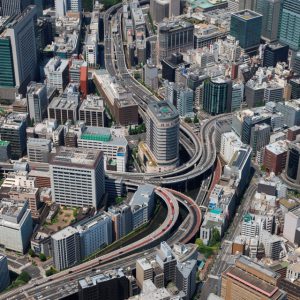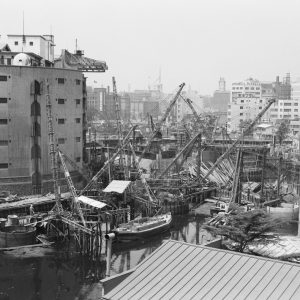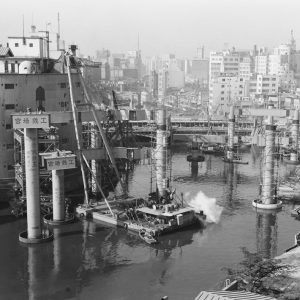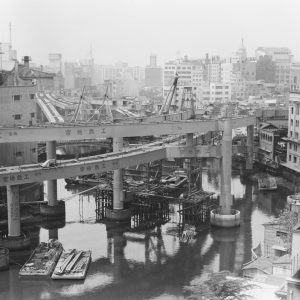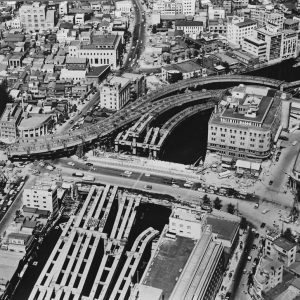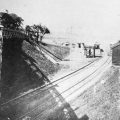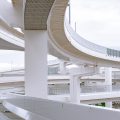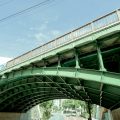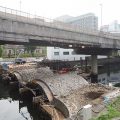Usually, the highway junction passes along with the surrounding landscape. However, in the case of Metropolitan Expressway, you will cut the handle and slip through the skyscrapers approaching on both sides. You can even look up at the huge junction from below and touch it while walking through the city. Whether you feel it as powerful landscape or landscape with pressure, whether it is a symbol of the vitality of the city, or as an obstacle, there is no single evaluation. But, certainly, the junctions of ME characterize the landscape of Tokyo.
Edobashi Junction is one of the most characteristic among the structures in the first phase of ME. Here, the roads connecting from all directions are concentrated in the bridges stacked vertically in 4 layers, and different lanes merge and branch within the space of about 50 m in width skillfully. Construction of an unprecedented structure. Of course, its realization was not easy.
In the initial plan, about 100 piers were required in the Nihonbashi River to make this junction. But then, the view of this historic river will be completely spoiled. Therefore, instead of simply placing the girder on the bridge piers, they adopted a three-dimensional rigid frame structure that connects them vertically and laterally to reduce bridge piers to about one third. It is a technology that has been used in the historic temple building for a long time, but it was the first time to use this structure with a steel bridge supporting a heavy load passing over it.
Also, to arrange the girder freely in a narrow space, a three-dimensionally curved box girder was adopted. In order to process a curved steel surface with higher precision, welding connection was fully adopted instead of rivet connection which was still at that time.
Rigid frame, curved girder, welding. Each technology has been developed individually before World War II. The same can be said for the prestressed concrete technology used in ME no. 3 line. These technologies were comprehensively used in ME project, one of the biggest project after the war, and then spread throughout Japan. Looking back on this history, Edobashi junction was not only a new type of transport node, but also a “node” in the history of technology. (D.Kitagawa)
| Type | Junction |
| Location | Chuo-ku/Tokyo |
| Structure | Steel |
| Construction year | 1963 |
| Facility manager | Metropolitan Expressway Co. Ltd. |

